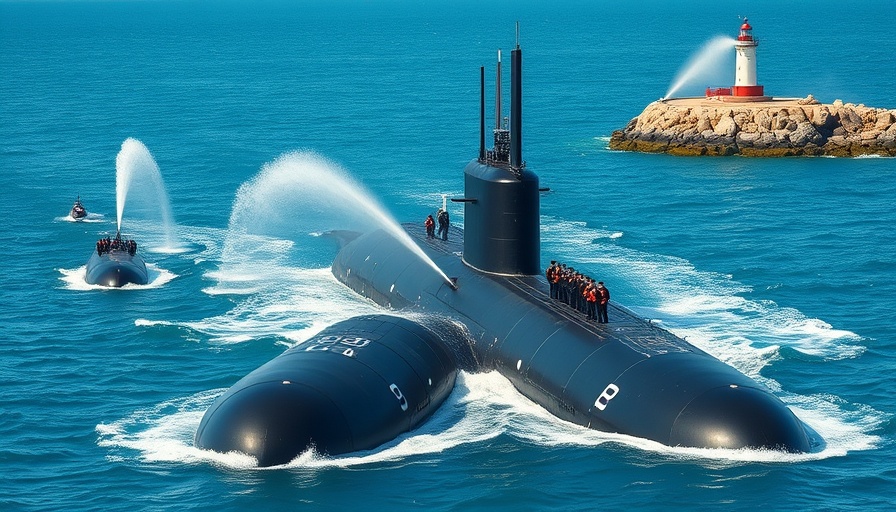
The Launch of Tourville: A New Era for French Submarines
On July 12, 2025, France's third Suffren-class submarine, Tourville, officially entered service, marking a significant milestone in naval defense technology. The Tourville is not just another vessel in the French Navy; it symbolizes the evolution of undersea warfare capabilities amidst changing global defense dynamics. These submarines are designed to enhance stealth operations and facilitate advanced naval engagements, a relevant advantage as nations arm themselves with more sophisticated military technologies.
Significance of the Suffren-Class Submarine
The Suffren-class submarines, including Tourville, come equipped with an array of advanced features. They boast a high degree of autonomy, silent operation capabilities, and an integration of cutting-edge sonar technologies that improve situational awareness under the waves. This emphasis on stealth and advanced warfare aligns with global trends in military technology, where silent operations are increasingly favored. More importantly, Tourville's entry into service exemplifies France’s commitment to modernizing its naval forces to meet contemporary threats.
Enhancements in Technology and Design
What sets the Tourville apart from its predecessors is its advanced drone capabilities and enhanced networking features. The submarine can carry and deploy drones that provide critical reconnaissance, a tactic that's becoming common in modern warfare. This evolution toward multi-role capabilities showcases not just the physical changes in submarine design but a strategic pivot in defense planning. With threats evolving rapidly in the maritime domain, these improvements are essential for keeping pace.
Impact on Naval Defense Strategies
As the geopolitical landscape becomes increasingly complex, submarines like Tourville are playing a crucial role in national defense strategies. French naval experts assert that the deployment of such advanced submarines enables not only deterrence but also a proactive response capability to potential maritime threats. This reflects an understanding that dominance under the sea can significantly alter the balance of power in naval conflict. With heightened tensions in various regions, the operational readiness of Tourville underlines France's dedication to supporting NATO and reinforcing its maritime influence.
Challenges Facing Naval Expansion
Despite the innovative strides made with the Tourville, France faces challenges in its naval expansion efforts. Budget constraints and shifting political priorities can impact future developments in naval technology. Furthermore, global supply chain issues affect the construction of cutting-edge military tech. Nevertheless, the successful launch of Tourville ushers in hope, demonstrating France's resilience and commitment to its naval capabilities.
Looking Ahead: The Future of Marine Warfare
The commissioning of the Tourville not only emphasizes the evolution of submarine technology but also illuminates the future of marine warfare. As nations invest in similar underwater warfare capabilities, the arms race at sea illuminates the necessity for continued innovation in stealth technology and multi-role operations. The Tourville stands at the forefront of this evolution, pushing the boundaries of what is possible beneath the waves.
Conclusion: Embracing Change in Naval Operations
The Tourville's entry into service is a milestone that reflects ongoing changes in naval strategy and operations. With increasing pressures from global naval powers, this submarine will be essential to maintaining order in international waters. As naval forces around the world continue to adapt, the Tourville illustrates both the progress made and the challenges still to overcome in modern naval warfare.
 Add Row
Add Row  Add
Add 




Write A Comment